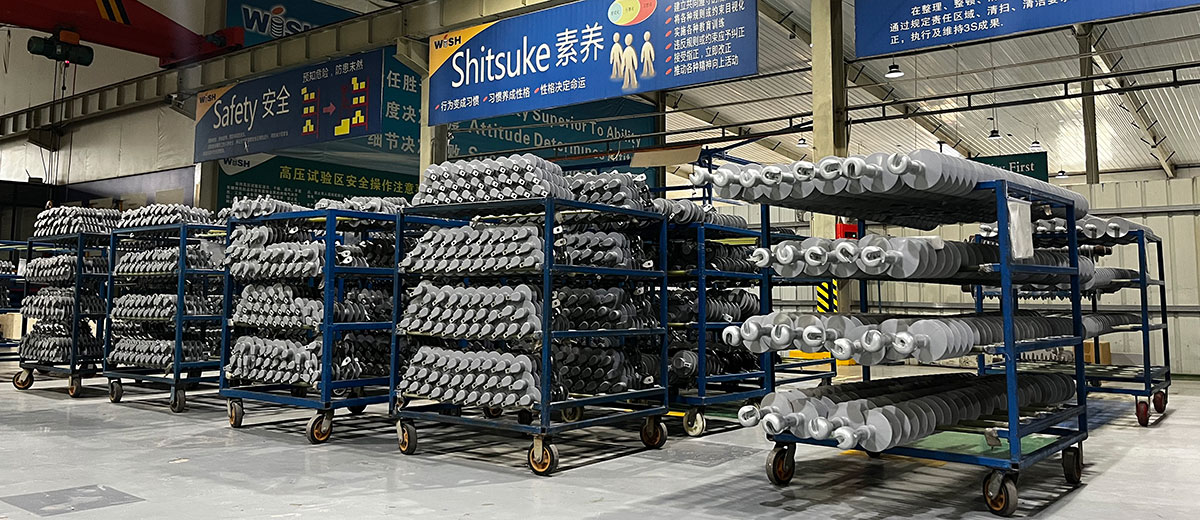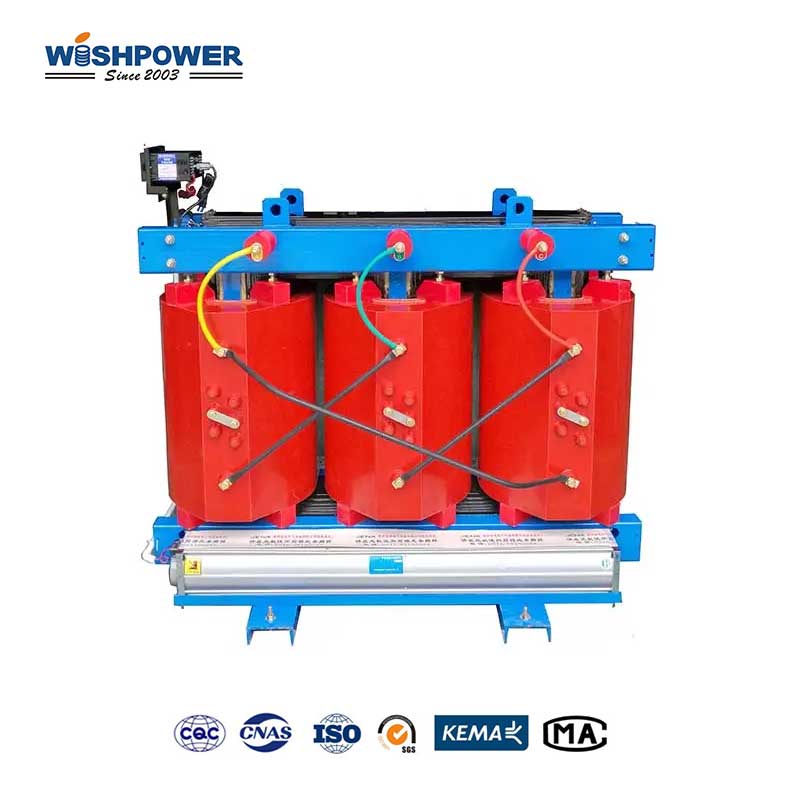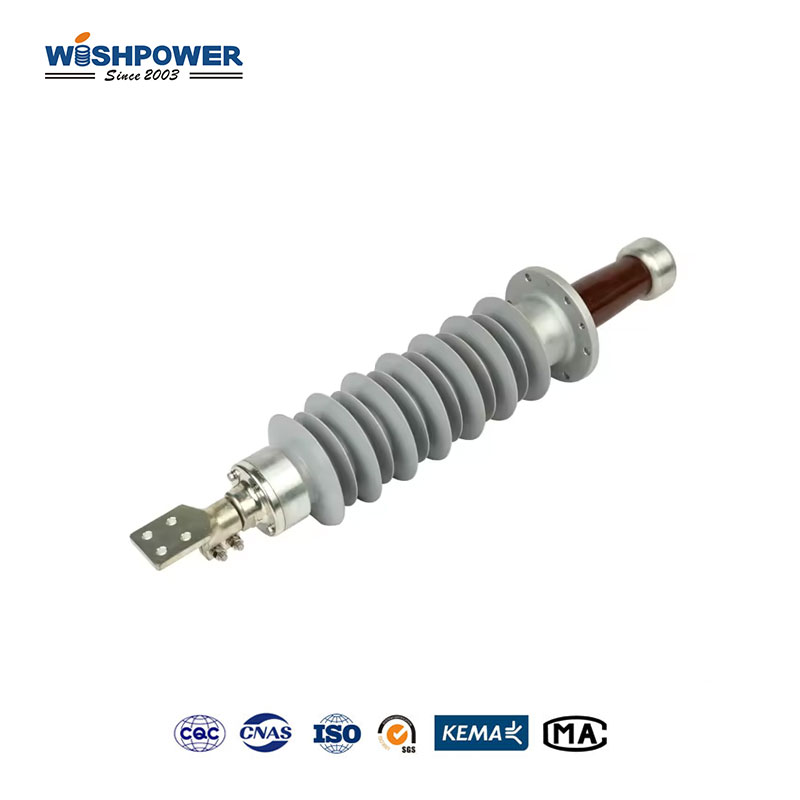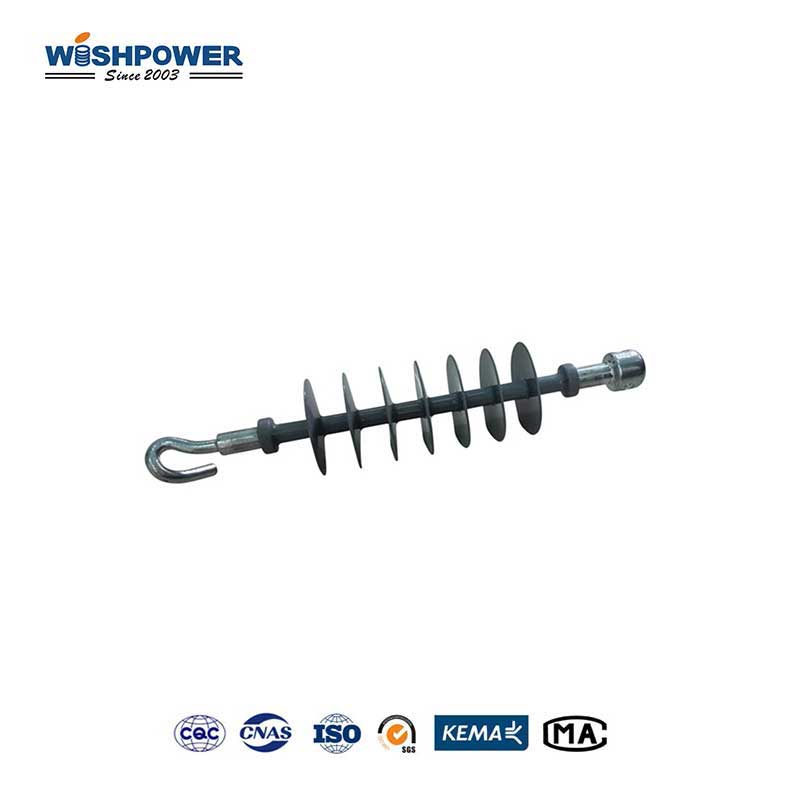What is a polymer insulator?
High-voltage power transmission and distribution systems use a polymer insulator as an electrical insulator. Unlike the conventional porcelain or glass insulator, a polymer insulator has either a fiberglass-reinforced resin core or an FRP core and a casing constructed of a polymer, such as silicone rubber, ethylene propylene diene monomer (EPDM) et cetera. In recent decades, these insulators have become increasingly popular because they have excellent performance in harsh environmental conditions, lighter weight, and better resistance to pollution.

Structure and composition of polymer insulators
FRP core (fiberglass reinforced plastic): Fiberglass-reinforced resin is the central rod or core of polymer insulation. This core has the mechanical strength that is needed to resist the high tensile forces of a transmission line. The insulator is designed with the FRP core being lightweight but strong, which will help the cable to be supported without bending or breaking at the insulation.
Casing or jacket: Insulation depends on a material called a polymer insulator, which has an outer layer that is typically silicone rubber or EPDM. This layer protects the FRP core from water, UV radiation, dust, and pollution. The casing is driven to be hydrophobic, avoiding electrical flashovers which can happen if the casing is now hydrophilic.
End fittings: The FRP core is fitted at each end with metal end fittings that are crimped or bonded to the ends. These fittings make a secure mechanical and electrical connection between the insulator and electrical equipment or transmission line.
Advantages of polymer insulators
Lightweight: This means that a polymer insulator has a greatly reduced weight compared to porcelain or glass respectively. This lightweight feature saves money on transportation costs and facilitates installation in remote or hard-to-reach locations.
Strong resistance to pollution: In environments with high pollution levels such as the industrial areas or coastal areas, traditional insulators get covered with dirt, salt, and other pollutant that can cause lightning to flash. Its insulating properties are maintained even in polluted environments due to its good hydrophobic surface repelling water and dust, as polymer insulators have.
Durability in harsh conditions: Polymer insulators are completely impervious to both UV and ozone, resistant to chemicals and extreme temperatures, and are hence suitable for service in most climates and environments. Being able to resist these tough conditions extends their service life and prints their maintenance frequency.
Better performance in high-voltage applications: Due to their lightweight and superior electrical performance, polymer insulators are suited for high-voltage applications. Transmission lines, substations, and distribution systems use them.
Reduced risk of breakage: Polymer insulators are constructed of materials that are unlikely to shatter under mechanical stress as the porcelain or glass insulators can do. The lower maintenance and replacement charges over the insulator’s lifetime thus come from this reduced risk of breakage.
Applications of polymer insulators
High-voltage transmission lines: High-voltage transmission system applications employing polymer insulators often isolate between electrical conductors and transmission towers. Due to their lightweight design and excellent performance in harsh environments, they are the best choice for long-distance, high-power transmission.
Distribution networks: In urban and rural distribution networks, polymer insulators support wires on poles and towers. Due to their durability and resistance to pollution, they are particularly suited in environmental conditions where there are harsh polluted areas, i.e. industrial areas as well as coastal areas.
Substations: In substations, polymer insulators are used to insulate high-voltage equipment such as transformers, circuit breakers, and busbars. Their size is very compact and also have very good electrical properties which allow for their use in small spaces.
Railway electrification: Railway electrification systems use polymer insulators to separate from supporting structures’ overhead wires isolation. With their resistance to environmental factors (UV radiation, extreme temperatures) they make good enough for an outdoor railway system.
What is a polymer insulator?
For the power industry, polymer insulators represent a major technological advancement over such traditional insulators in porcelain or glass. Versatile and cost-efficient, their lightweight design, and superior resistance to pollution and environmental degradation, make them an ideal material for transport and distribution of power in modern systems. With energy-efficient, reliable, and cost-effective performance becoming more important, polymer insulators are expected to be more commonly used in a range of applications helping to cement their relevance in future power infrastructure.
If you have different opinions or want to know more, please leave a message on the website or contact us directly at info@wishpower.net

















